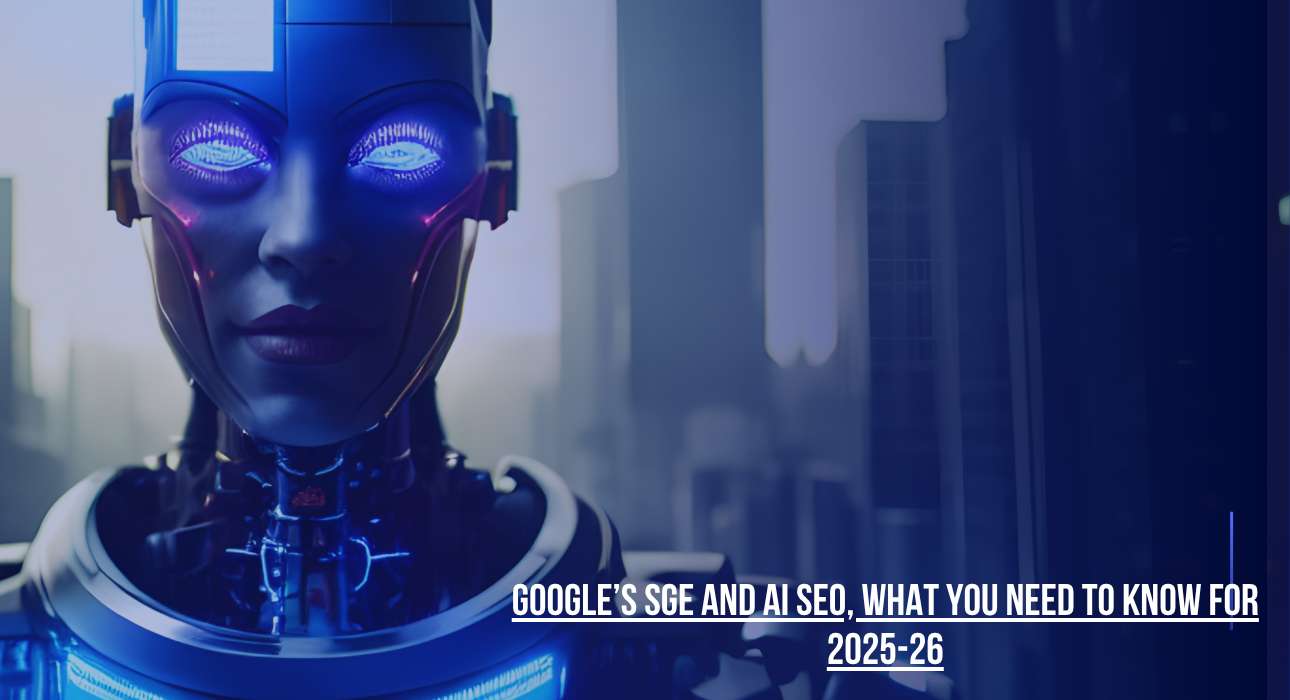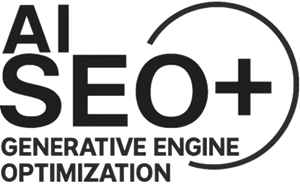Google’s SGE and AI SEO: What You Need to Know for 2025-26

Google is rewriting the rules of search with its Search Generative Experience (SGE)—an AI-powered upgrade that’s changing how users discover content and how businesses earn visibility. If your SEO strategy is still focused solely on traditional 10-blue-link results, you’re already behind.
In 2025, success in search means understanding how SGE works, how AI generates responses, and how to optimize your site for this new AI-first SERP layout. In this guide, we’ll break down what Google SGE is, why it matters, and how you can prepare your content and technical SEO for the future of AI search.
What is Google’s SGE (Search Generative Experience)?
SGE is Google’s AI-powered search interface that uses generative AI to provide quick, informative answers directly in the search results. It appears at the top of the SERP with a colored box, giving users AI summaries before any organic or paid listings.
- Powered by generative AI: Pulls data from multiple sites to create a quick answer box.
- Includes citations: Links to sources used for summarization.
- Provides follow-up prompts: For deeper engagement and contextual refinement.
SGE is not replacing traditional search, but it’s shifting user attention—and traffic—toward AI-generated content. If you want visibility, you must earn a place in this top section.
How SGE Impacts SEO in 2025-26
1. AI-Generated Answers May Bypass Traditional Listings
When users get direct answers from SGE, they’re less likely to scroll to organic results. That means your content needs to not only rank—it needs to be the source of AI answers.
Impact: Lower CTR on traditional #1 rankings, higher importance of citations and AI inclusion.
2. Citation-Based Traffic Will Become the New Goal
SGE includes links to sites used to create its AI responses. If your content is high-quality, structured, and authoritative, it can be cited—even if it’s not the top organic result.
- Featured snippets 2.0: Instead of one answer, SGE may cite 3–5 different sources.
- Opportunity: More sites get visibility, especially niche content and deep pages.
3. Intent-Driven, Conversational Content Wins
SGE is trained on natural language and user behavior. It favors content that directly answers search intent in a clear, conversational way. Think FAQs, how-tos, comparisons, and problem-solving guides.
Action Step: Use plain language, bullet points, and clear structure to match user expectations.
How to Optimize for Google SGE in 2025-26
1. Focus on Topical Authority and Depth
SGE rewards content that demonstrates expertise, depth, and relevance across an entire topic—not just a single keyword. To get cited by SGE, your content must provide value across the user journey.
- Create comprehensive, pillar-based content clusters.
- Update content regularly with new data and questions.
- Interlink related pages to establish topic coverage.
2. Use Structured Data to Help AI Understand Your Content
Schema markup plays a bigger role in helping AI interpret your content correctly. Implement structured data like:
- FAQ schema for question-answer pairs.
- HowTo schema for step-by-step guides.
- Article, Product, and Review schema for SERP enrichment.
Bonus: Structured data also helps with traditional rich results and voice search.
3. Optimize Content for AI Comprehension
SGE is trained on natural language, not just keywords. Use NLP-optimized writing practices:
- Answer questions clearly in the first 1–2 sentences.
- Use entities, synonyms, and semantically related terms.
- Write as if you’re training an AI model, not just impressing a human reader.
Pro Tip: Use AI tools like ChatGPT to simulate how your content might be summarized.
4. Speed, Mobile, and Core Web Vitals Still Matter
SGE pulls from fast, accessible, and technically optimized pages. Don’t ignore performance.
- Improve LCP, CLS, and INP for smoother experiences.
- Ensure mobile responsiveness and clean rendering.
- Use CDNs and image compression for faster delivery.
5. Build Brand Signals and EEAT
Google’s SGE relies on trusted sources. That means content authored by experts, published under strong brands, and supported with real-world trust signals will dominate.
- EEAT: Experience, Expertise, Authoritativeness, Trustworthiness.
- Include author bios, citations, and outbound links to reliable sources.
Recommendation: Invest in author branding and third-party credibility.
SGE and AI SEO = Generative Engine Optimization (GEO)
SEO is no longer about just optimizing for keywords—now, it’s about being understood and featured by AI. That’s why Generative SEO (GEO) is the next evolution. GEO ensures your site and content are structured, semantically rich, and AI-ready.
What GEO Includes:
- AI-first content creation with intent-based NLP models.
- Structured markup and schema automation.
- Content refresh workflows to align with changing AI behavior.
- Analysis of how AI systems (like SGE) reference your pages.
GEO = Traditional SEO + AI Integration + Semantic Intelligence
How SEO PLUS GEO Helps You Rank in the SGE Era
At SEO PLUS GEO, we stay ahead of AI search evolution. Our team builds SEO strategies that work across traditional rankings, SGE, Bing Copilot, and even voice search. We ensure that:
- Your content gets cited in AI answers.
- Your site structure supports AI understanding and indexing.
- Your authority signals help you outperform even higher-ranked competitors.
From schema markup to AI content pipelines, we tailor your site for the future of SEO.
Final Thoughts: Adapt or Be Invisible
Google’s SGE is not a test—it’s the future of search. With AI deciding what users see first, businesses must rethink how they produce and optimize content. The days of stuffing keywords and ranking top are gone. Now, it’s about helping AI understand your brand, content, and expertise—so it recommends you first.
2025 SEO = AI-first SEO. Don’t wait for traffic to drop. Start aligning your site with SGE today.
Need help preparing for Google SGE? Talk to our AI SEO experts at SEO PLUS GEO →
